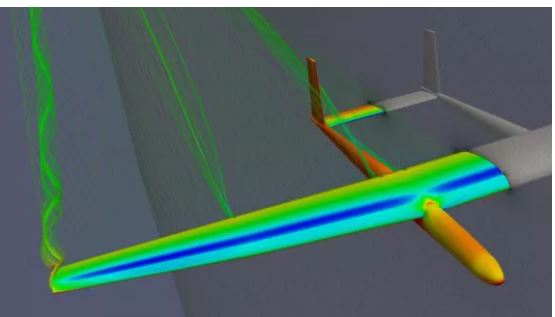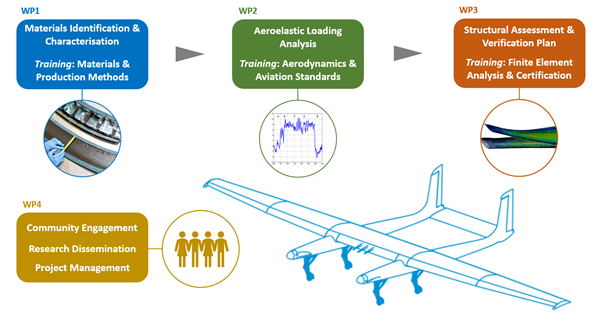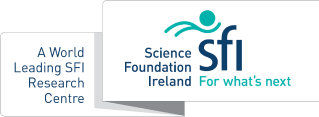
AmpyxPower

- Title
-
Material Characterization and Loading Analysis for the AmpyxPower Airborne Wind Energy System
- Start Date
-
1st September 2019
- End Date
-
31st August 2020
- Funding Body
-
Science Foundation Ireland (SFI) Industry Fellowship Programme
- Project Partners
-
NUI Galway, Ampyx Power
- Principal Investigators
-
Jamie Goggins, NUI Galway
- Research Area
-
Energy, Climate
Introduction
Airborne wind energy is an innovative and elegant solution to the world’s growing energy needs. The Ampyx Power system uses unmanned aircraft to fly at heights where the winds are stronger and more consistent. But this novel solution faces unique engineering challenges, such as designing the airframe structure using low-cost materials that can withstand extreme and varying forces.

Aims
This project will analyse the effects of these forces on the aircraft wing and identify the materials and production methods needed for the next generation of airborne wind energy systems. This project will apply advanced engineering analysis methods to support the technical development of the Ampyx Power airborne wind energy system (AWES). The differences in operation between AWES and traditional aircraft are significant, creating unique challenges in identifying suitable and affordable materials and production methods. Reducing the levelized cost of energy for AWES to be competitive with traditional wind turbines will require an integrated materials-manufacturing-design approach.
Work Packages
The potential for cost reduction of the wing structure will be assessed through characterisation of materials not yet considered for aviation along with numerical modelling of the manufacturing process. The project will investigate the design requirements, such as material safety factors, from a structural verification and certification perspective.
The effects of aerodynamic flutter on the wing structure are also of concern, posing a potential obstacle to the efficient scale-up of the device to multi-megawatt size. Aeroelastic analysis of the wing structure will be conducted to determine the conditions for the onset of flutter in a 1 MW system.
Stakeholder engagement will also be conducted to build upon the technical advances of the project in future business development. Funding opportunities will be assessed, followed by engagement with parties in the aviation and composites manufacturing sectors to advance the manufacture of the composite AWES through the technology readiness levels.

Deliverables
- Python-based manufacturing cost model
- Aeroelastic analysis of flutter of an AWES
- Composite material development and structural testing plan
- Recommendations for a cost-effective manufacturing strategy for an AWES wing
- Stakeholder engagement for manufacturing of airborne wind energy systems
Contact
Contact: Jamie Goggins, NUI Galway
Email: ei.yawlawgiun@sniggog.eimaj



